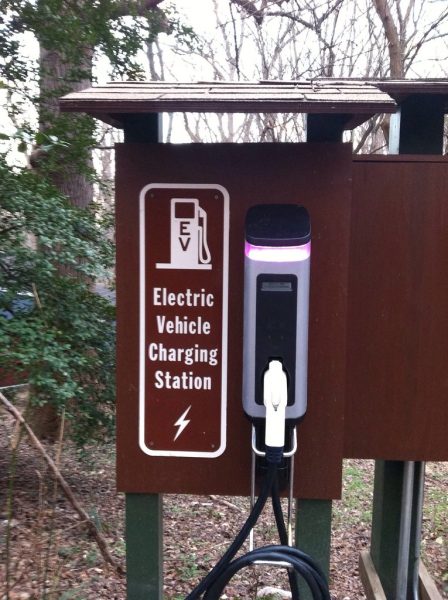When a conflict is brought to attention, society has two responses to it. People choose to ignore, or investigate the problem further. People that choose to analyze conflicts further will help advance society’s lifestyles overtime. At the moment, a major problem in the world is the large amounts of pollutants coming from diesel semi trucks. Diesel trucks dominate American roads, transporting many valuable goods and services to people. But, these trucks come with many terrible costs. Not only money costs, but also the costs of human and environmental welfare. Although diesel semi trucks are a popular mode of transportation for many goods, diesel trucks bring nothing but harm to the environment, and the future of society.
Despite the fact that diesel trucks are very efficient, those trucks are the biggest polluters in the road transportation industry. On average, a diesel truck costs $150,000, and costs around $0.14 per mile, which includes the gas and maintenance costs per mile driven. Furthermore, diesel trucks as a whole produce a whopping 422.8 metric tons of waste per year, one ton of metric waste weighs approximately two thousand pounds. Ryan Greenwalt, the Chief Executive Officer of Alta Equipment Company, works with different types of vehicles on a daily basis. He mentions in an interview that burning fossil fuels is really inefficient, he also notes, “Not only is it inefficient use of the energy that’s in the fuel and gasoline, it also really pollutes a lot. It puts out a lot of particulates into the atmosphere.” Because of the fuels being put into diesel vehicles, the emissions being released are polluting the air more and more and builds up in the air. Consequently, as that waste continues to build up, the condition of the atmosphere will plummet.
Moreover, the particulates being released into the atmosphere are not good for the welfare of living things communities. The carbon admissions being released from these trucks have a significant impact on the greenhouse effect, which is the cause of global warming. Particularly, global warming leads to hotter temperatures, more severe storms, and many more dreadful side effects to living things. In addition, the greenhouse effect is not good for human health either, it attacks humans similar to how it attacks the air. Within the article, Health and Environmental Effects of Particulate Matter it states, “Small particles less than 10 micrometers in diameter pose the greatest problems, because they can get deep into your lungs, and some may even get into your bloodstream,” Because of these harmful effects to humans, overtime the health and wellbeing of society could have weakening long term effects.
Nevertheless, some have decided to dig deeper into this pollution issue, and have come up with the solution of electric vehicles (EV). EV’s cost around $400,000, which is $250,000 more than a regular diesel, but they have many upsides. For example, it only costs $0.04 per mile, and these vehicles as a whole produce around 200 metric tons of waste per year, which is almost half of what diesel trucks produce. One main factor as to why they produce less waste is because there are less moving parts inside, so theres less worn out. Plus, instead of filling the vehicle with gas, it has to charge at a charging station, which is more environmentally friendly. Otherwise, electric vehicles complete the same tasks that a regular diesel truck would, but they have many benefits going forward. As noted by Mr. Greenwalt, “I think that long term EV’s will be the right answer, I think in the way that we power our vehicles and our transportation, there’s a better way. The reason we are still doing it this way is because of the cost of changing to EV’s.” Despite the cost of transitioning to these trucks, society has started to consider using electric modes of transportation, in the hopes of helping future communities.
Nonetheless, this is only a piece of the beginning as to what could come. As referenced by Ryan Greenwalt, “It’s only part of the answer, it’s not going to be the ultimate answer, but it’s incremental,” The potential and possibilities are endless for what society could do to improve, but people must examine this problem further for the best results. For the quality communities to improve, electric vehicles need to be more present on the roads. At this point in time, there are better alternatives rather than using diesel trucks, and electric vehicles are an incremental way to help this worldwide problem.

Photo credit: Creative Commons
Works Cited
Greenwalt, Ryan. Personal Interview. 7 February 2023.
Fecht, Sarah. “How Exactly Does Carbon Dioxide Cause Global Warming?” State of the Planet, 25 Feb. 2021, news.climate.columbia.edu/2021/02/25/carbon-dioxide-cause-global-warming/#:~:text=As%20CO2%20soaks%20up%20this.
Sirull, Ellen. “How Much Does It Cost to Charge an Electric Vehicle? | EnergySage.” EnergySage Blog, 23 Mar. 2022, news.energysage.com/electric-vehicle-charging-cost-vs-gas/.
Statista. “U.S. Heavy-Duty Vehicle GHG Emissions 1990-2019.” Statista, Apr. 2022, www.statista.com/statistics/1120519/us-med-heavy-trucks-vehicle-ghg-emissions/.
US EPA. “Health and Environmental Effects of Particulate Matter (PM).” US EPA, 9 May 2019, www.epa.gov/pm-pollution/health-and-environmental-effects-particulate-matter-pm.



